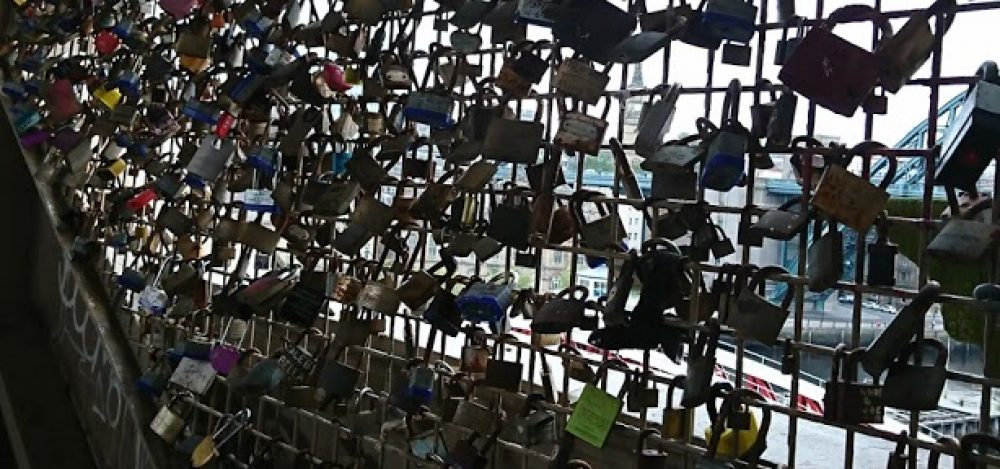How can oral historians interact with other forms of interviewing, voice recordings and publication of oral sources? In this Lug post, Andy Clark discusses his experiences of interviewing and producing features for BBC Radio Scotland. He considers the differences between this style and his oral history work, and the ways in which oral history training can be advantageous when undertaking broadcasting work.
In his ‘Kissing Cousins’ piece, Mark Feldstein (2004) considered the relationship between oral history and journalism. The article outlined the similarities and differences between oral history and news journalism, arguing that, while very different, each discipline could learn from the other. In this post, I present a similar consideration, but with entertainment journalism rather than news and current affairs. I argue that differences are more numerous than similarities but, like Feldstein, I think that oral historians can benefit from working in entertainment broadcasting.
I started working with BBC Scotland in 2016. Following some research work, I began contributing to the popular Pipeline programme, the BBC’s flagship show on all things piping presented by Professor Gary West of Edinburgh University. Bagpipes might not be everyone’s cup of tea but, as you will know if you read my introductory post, it is definitely mine. The show has a large, international following, and is a staple in the weekly listening for those of us involved in piping. I have become a regular feature presenter for the show and have co-produced four feature packages, with my latest piece broadcast on March 24th.
It was after this latest piece was broadcast that a conversation was struck up in the office of the Oral History Collective considering different types of interviewing and dissemination, and the role of oral historians in these.
Beginning with the similarities, the dominant factor is rapport between interviewer and interviewee. In producing features for entertainment shows it is the role of the interviewer to allow respondents the opportunity to discuss their experiences and answer questions in an informative and relaxed manner. Most oral historians adopt such an approach in interviewing, and I found this aspect of my training and experience invaluable when interviewing for broadcast.
Another key similarity is preparation and technological knowledge. As oral historians, a fundamental part of our training is ensuring we are prepared for every interview and can handle most technological disasters that might happen before, during, and after the interview. With interviews for broadcast, particularly when time with respondents is constrained (more below), this is perhaps even more important.
However, the differences when interviewing for broadcast make the process very distinct. Firstly, interviews have to be short and concise. Most feature packages don’t tend to go beyond fifteen minutes and, for a strong piece with multiple participants, you would look to include no fewer than four voices. Additionally, many interviewees will have very short windows when they can sit and talk. One of my favourite broadcast interviews was with the incredible Fred Morrison, one of the most celebrated folk musicians of the last 50 years. I could have interviewed Fred for hours about his life and musical career. However, as it was in the middle of the Piping Live! festival and the production deadline loomed, I had ten minutes. No time to discuss anything other than what was required for the broadcast.
A second key difference is the almost-complete removal of the interviewer’s voice. Listeners to entertainment shows mostly want to hear from interesting people discussing interesting things – not so much a question and answer session. As a result, the interviewer’s own voice is largely absent. Answers often have to be re-recorded to give the impression of a statement rather than an answer. The interview also has to be conducted in a near-silent area to allow for chopping and editing without background noise. Although many oral historians strive for this with every interview (personally, I do not), a great interview can be rendered useless by the distant sound of music, as a clean edit is impossible. This also goes against much of our training and methodological considerations of the role of an interviewer in the intersubjectivity that develops in an interview.
Lastly, the dissemination of the recording is vastly different from the approach of most oral historians. Although many of us advocate public exhibits and events incorporating clips from oral history recordings, the process for broadcast is hugely different. Entertainment is key – a good interview with a monotone respondent, or an interviewee who ‘ums’ and ‘aws’ beyond that which can be repaired by edit is usually omitted from broadcast, regardless of content.
To conclude, there are vast differences between recording for broadcast entertainment and the work done by oral historians. It is interviewing – but not as we know it. However, I would argue that the oral historian benefits. My work with BBC Scotland has given me valuable experience in conducting different types of interviews, for different purposes and audiences, which I feel has strengthened my ability as an oral historian.
Join the conversation in the comments section below.
